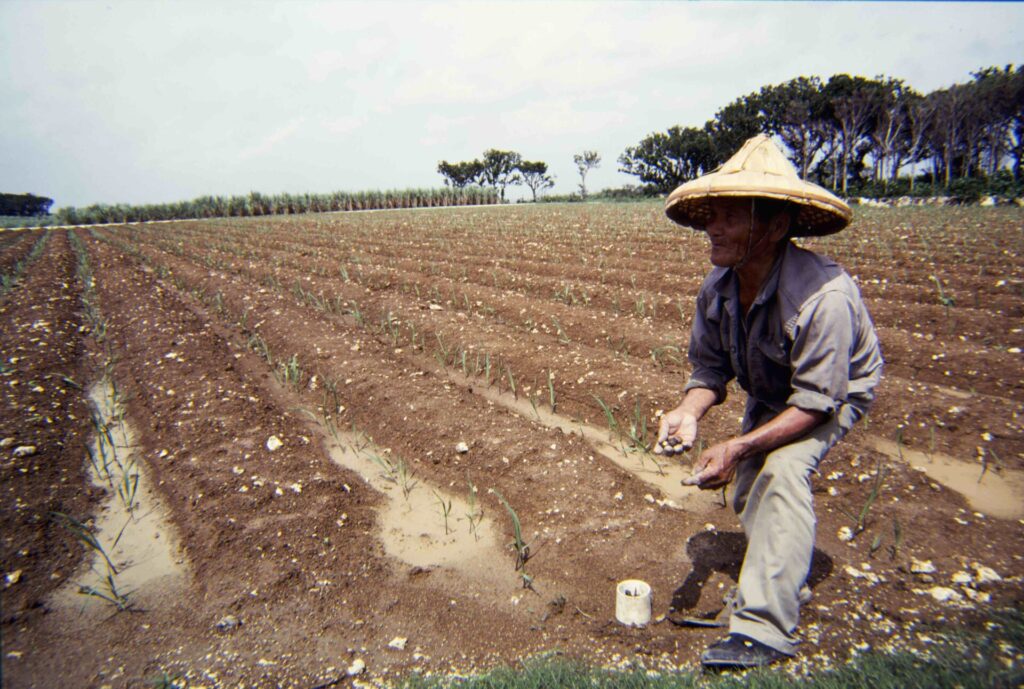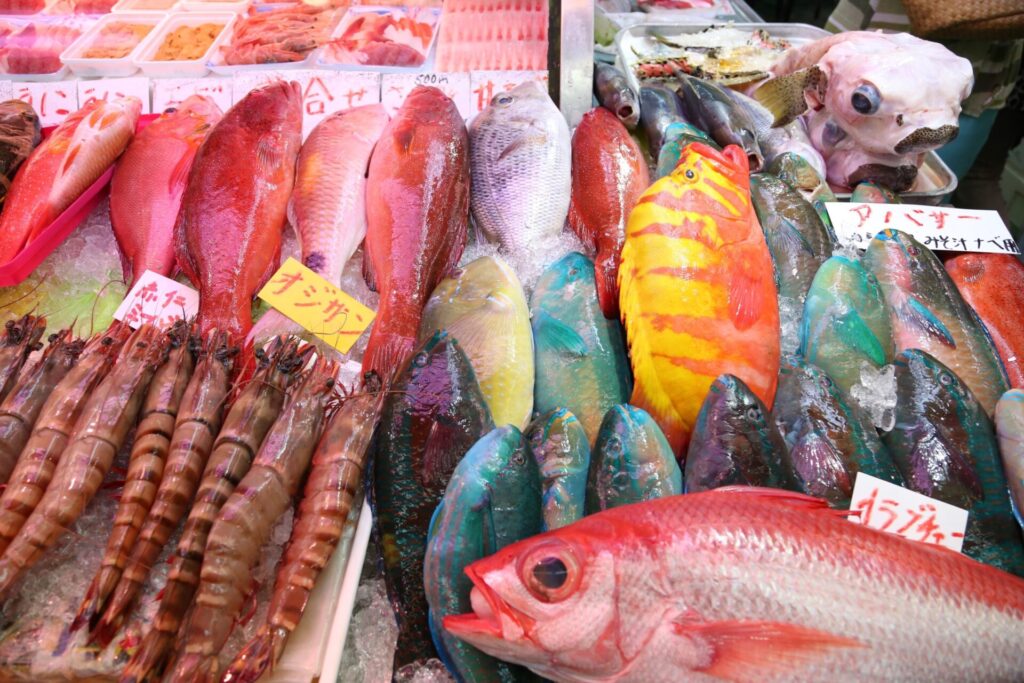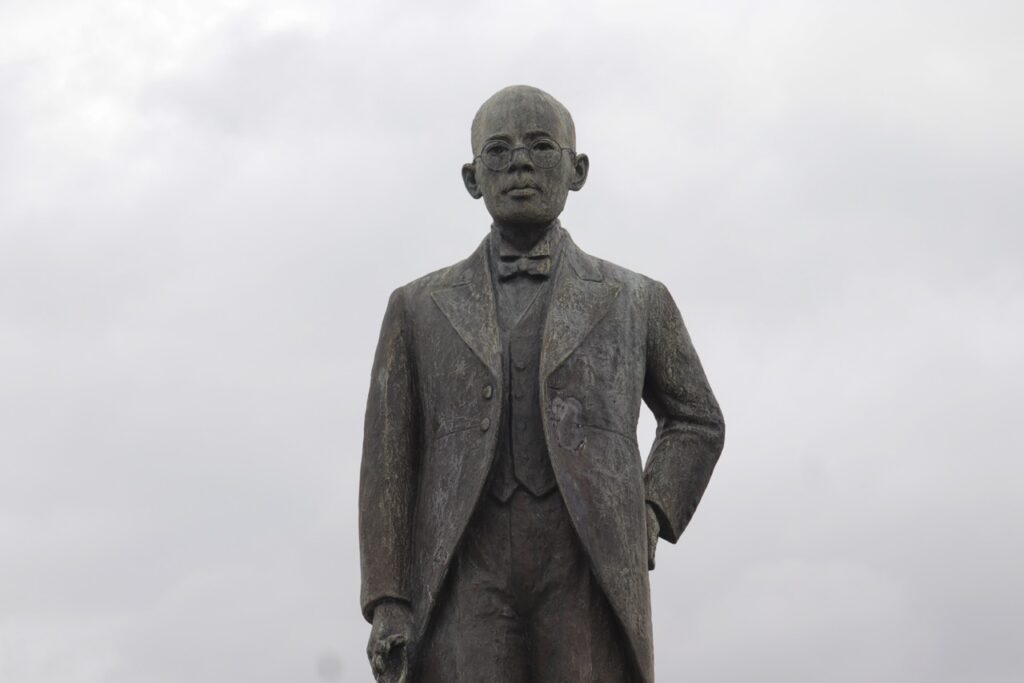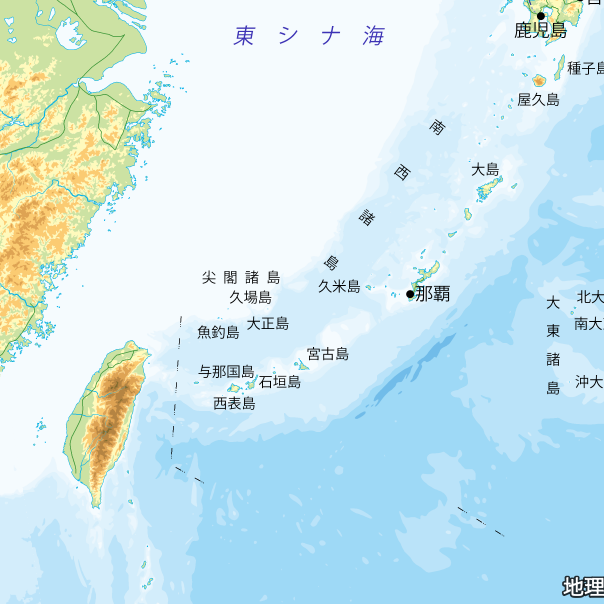Red Soil

Soil found on the main island – up north from Ishikawa in central Okinawa, Ishigaki Island, and Iriomote Island. When people speak of this in Okinawa, they are talking about the red soil that runs down from the hills and fields into the ocean where it accumulates on the seabed and suffocates the lives in the coral reefs.
In the myth telling the origins of the Okinawan islands, it says that they came about with the growth of a flat little isle over which the eastern waves could cross to the west and the western waves to the east. This suggests that the islands that stretch from Amami to Yonaguni are elevated coral reefs. These coral reefs create white horses offshore; as a natural breakwater, they have protected the islands from typhoons. Inside the quiet reef is a field, rich with seaweed, and a farm of fish and octopus. We cannot forget that the coral reef supports people’s life, supplementing the small land. Some say “corals are inedible.” As in Shiraho, there were mayors and governors who thought it appropriate to build airports out on the reef. It seems that people nowadays have forgotten the blessing of the corals and lost their gratitude for these reefs. The offshore coral reefs are threatened not only by landfill construction projects but also by the red soil runoff that flows into the sea as a consequence of land development.
With rain, the red soil flows like blood into the river and colors the sea ocher. The land is eroding and Okinawa’s famed coral reefs are now in critical condition. If such destruction continues, the islands will go back to what it was at birth. At the mercy of the rough waves of the Pacific Ocean, the islands would melt to nothing.
The red soil pollution intensified since the Reversion to Japan in 1972, with the large-scale land development intended to realize mechanized agriculture. The underwater photographer Yoshimine Zenji, who had been diving in the Okinawan waters for over forty years, was the first one to speak out of its harmful influences (Passed away September 1977, he is the author of Umi wa Naiteiru, published by Kobunken).
In the company of Yoshimine, I myself visited a land-development cooperative union. There, I found out that the fields developed after the reversion with governmental grants ignored the quality of Okinawan soil, the torrential rain of the subtropics, and the length of the rivers, in other words, the natural conditions of Okinawa to fit the “mainland standards.”
Because the red soil grains are extremely fine, they do not aggregate in a grit chamber of a mainland standard once they flow out. Check dams are only effective against sand and are useless against red soil. Once it reaches the ocean, it fuses with the magnesium dissolved in the water and settles.
Okinawa Prefecture issuing a regulation to protect against runoff of red soil and other substances in October 1995 was a step forward. However, this order is deficient in one critical point and is therefore incomplete. It regulates red soil runoff only during construction and the fields that have been continuously draining out or are newly built are exempt from the regulation, once completed. As a consequence, red soil runoff does not only stop, but the cause of the drainage keeps increasing. The nutrients have flown out together, and the stony fields that have discarded agriculture are a pitiful sight.
The red soil runoff can only be stopped at its source. The only way to put an end to it is to create paddies or reservoirs within the fields and thus reverse the water flow to retain the nutrients and the red soil in the fields. It is not of the standard Japanese approach, but it is a traditional technique practiced by Okinawan farmers.
Hence now, in the year 2022, the Japanese government is trampling the will of Okinawa people by conveying masses of red soil from land and sea to bury the serene ocean of Henoko. In national elections and gubernatorial elections, the will of the people elected a politician against the landfill of Henoko sea and the construction of U.S. military air bases or naval ports. Furthermore, their will is shown in the fact that 72% of the votes were voted “against landfill”, at the prefectural referendum “To Inquire the Appropriateness of Henoko Landfill” in February 2019. Here again, we see structural discrimination of the Japanese government towards Okinawa.





































































































































































































































